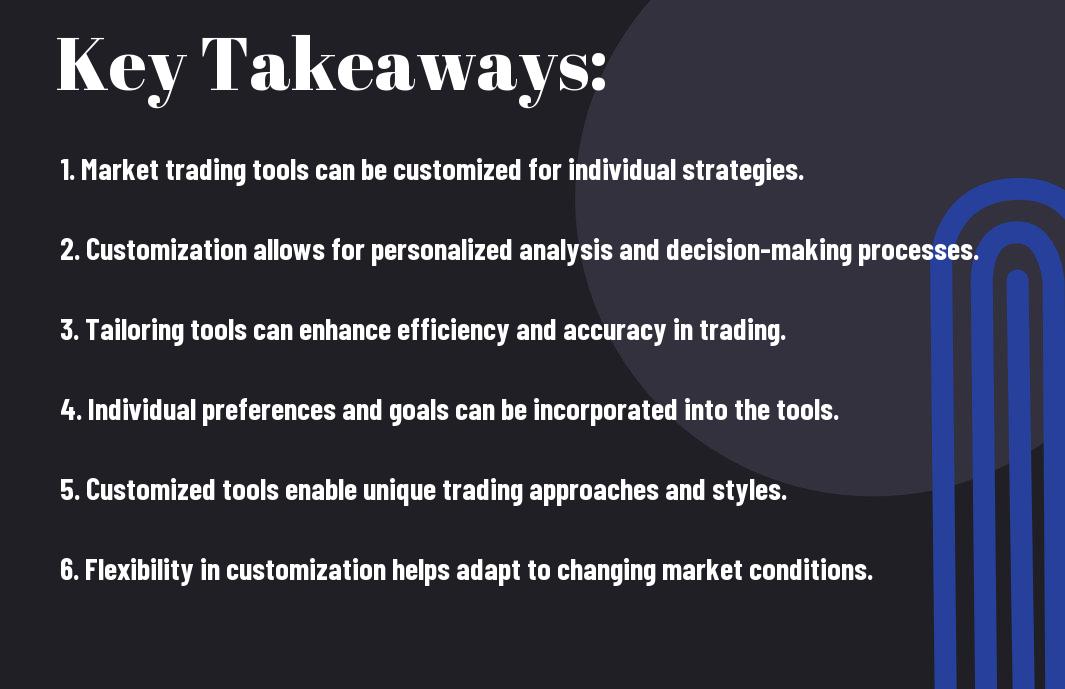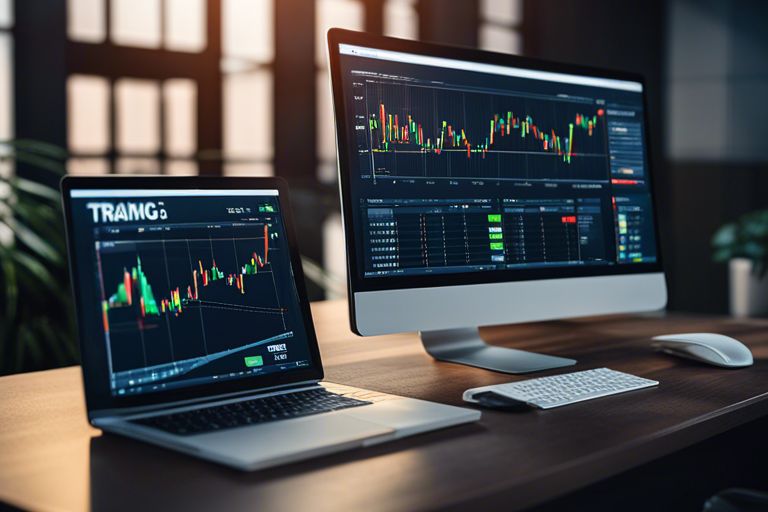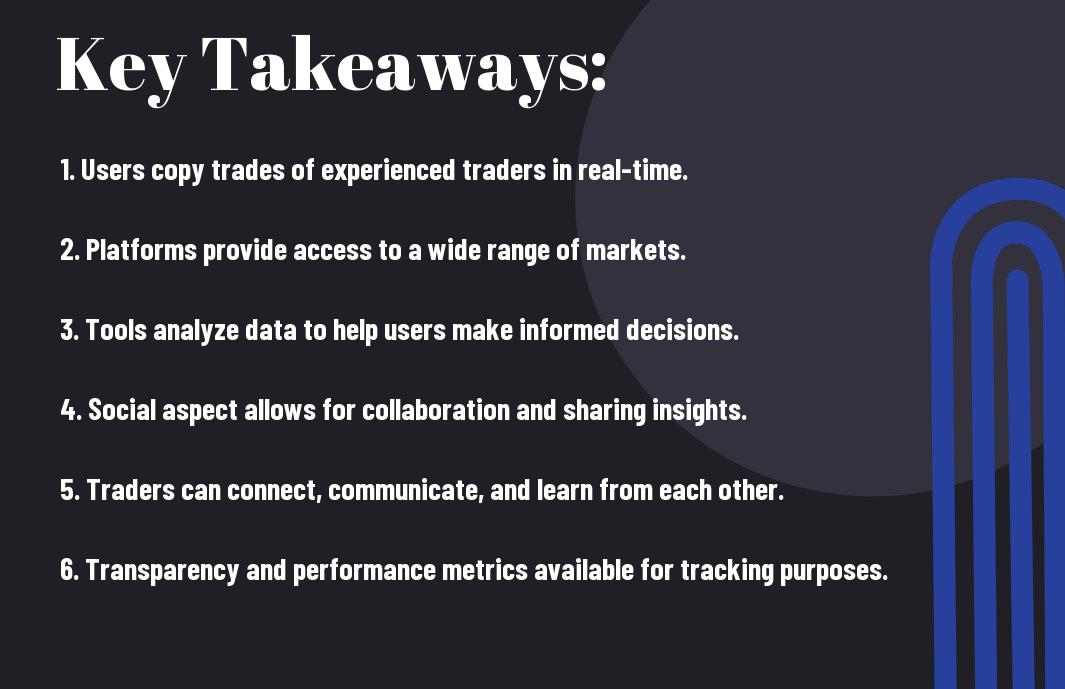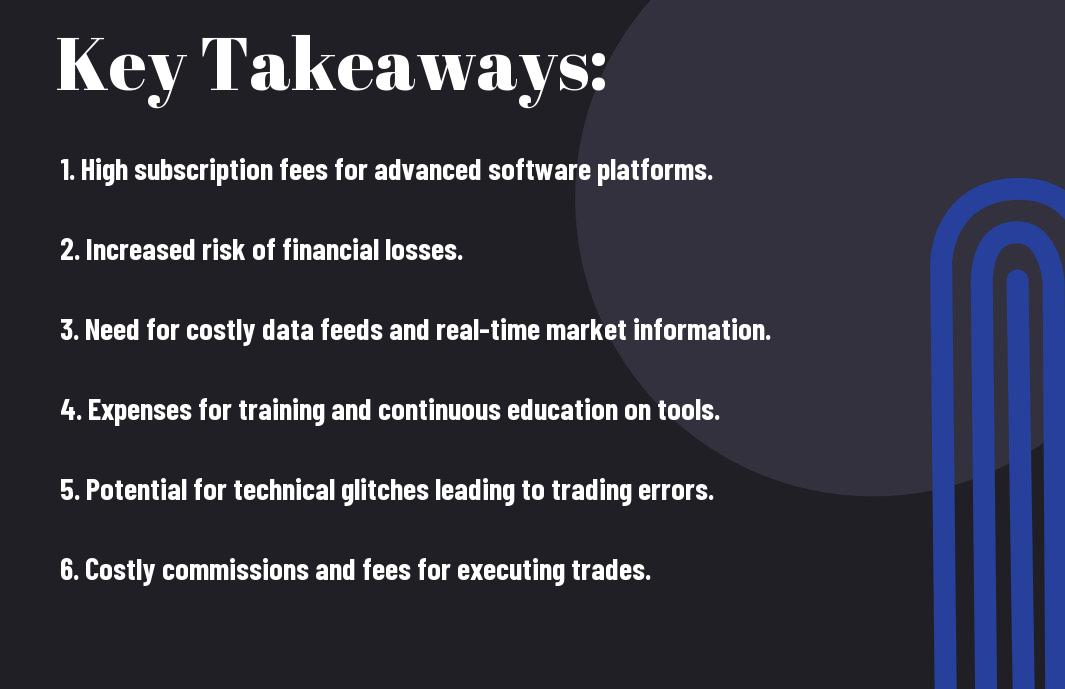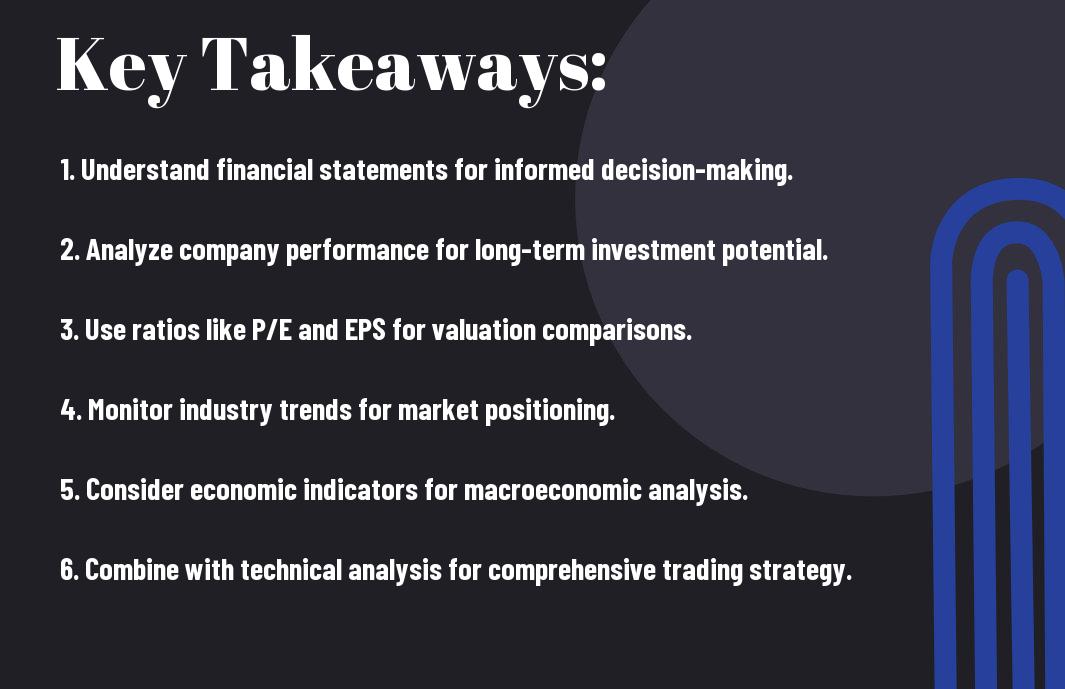It’s important to understand the significance of mobile access to market trading tools for modern traders like yourself. In a digital world where every second counts, having the freedom to trade on-the-go can make a huge difference in seizing opportunities and managing your investments effectively. Explore the benefits of mobile trading platforms for the modern trader here and stay ahead in today’s fast-paced market environment.
Key Takeaways:
- Instant Access: Mobile access to market trading tools provides modern traders with the ability to react quickly to market changes and execute trades in real-time.
- Convenience: The ability to trade on-the-go from anywhere at any time makes mobile access necessary for modern traders who lead busy lifestyles.
- Efficiency: Mobile trading tools allow traders to monitor their investments, research market trends, and make informed decisions without being tied to a desktop computer.

The Evolution of Trading
From Desktops to Mobile Devices
While trading was historically confined to physical exchanges and later desktop computers, the landscape has transformed significantly with the advent of mobile devices. An increasing number of traders now rely on smartphones and tablets to access market data, execute trades, and manage their portfolios on the go. This shift has liberated traders from the constraints of physical locations and bulky desktop setups, empowering them to trade anytime, anywhere.
The Rise of Remote Work and On-the-Go Trading
Trading on mobile devices has become synonymous with the rise of remote work and on-the-go trading. You are no longer tied to a desk or a specific location to participate in the market. Whether you are traveling, working from home, or simply prefer the flexibility of managing your trades outside traditional office hours, mobile access to trading tools has revolutionized the way modern traders operate.
Trading on the go allows you to seize opportunities in real-time, react swiftly to market developments, and stay connected to global financial markets regardless of your physical location. The convenience and accessibility offered by mobile trading apps have made it easier than ever for traders to stay informed and make informed decisions, contributing to a more dynamic and engaging trading experience.
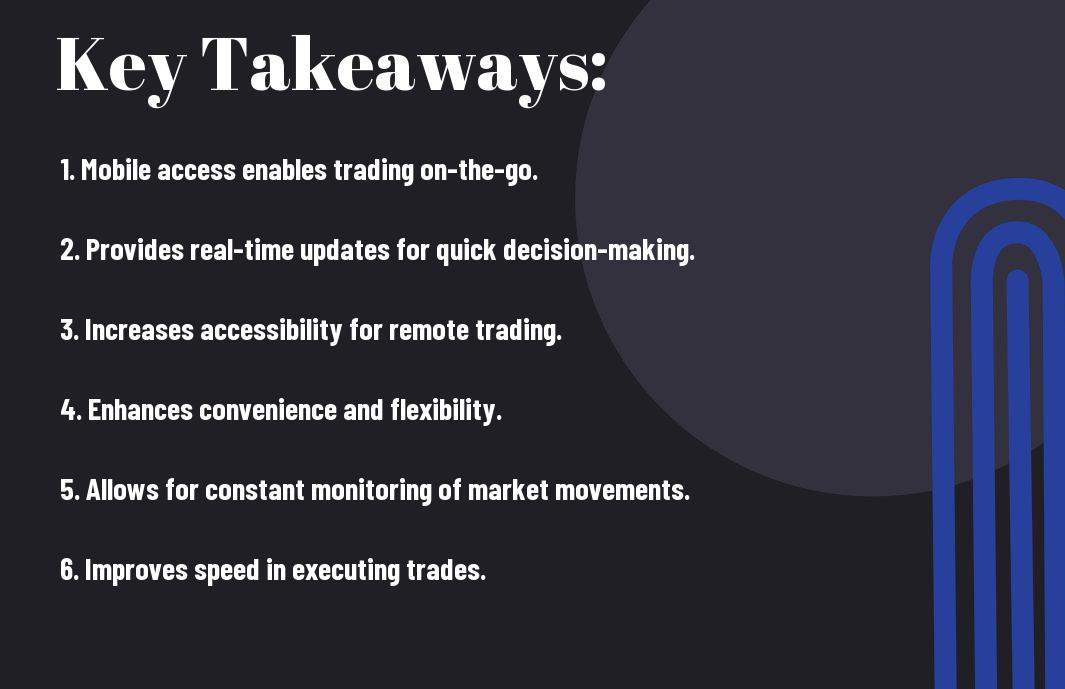
Benefits of Mobile Access
Convenience and Flexibility
The convenience and flexibility of having mobile access to market trading tools cannot be understated. An important benefit is the ability to trade anytime and anywhere, allowing you to stay connected to the market even when you are on the go. Whether you are commuting to work, traveling, or simply away from your computer, having the power to access your trading tools from your mobile device gives you the freedom to make informed decisions at your fingertips. This flexibility enables you to seize opportunities and manage your investments more effectively.
Real-time Market Updates and Alerts
Mobile access provides real-time market updates and alerts directly to your smartphone or tablet, keeping you informed of crucial developments as they happen. You can receive notifications about price movements, news releases, and other market events, allowing you to act swiftly and make timely trading decisions. With instant access to real-time data, you can monitor your investments closely and adjust your strategies accordingly, giving you a competitive edge in the fast-paced world of trading.
To further enhance your trading experience, some mobile trading apps offer advanced features such as customizable alerts, in-depth market analysis, and research tools. These additional functionalities empower you to stay ahead of market trends, identify potential opportunities, and make well-informed trading decisions. By leveraging these tools on your mobile device, you can optimize your trading performance and achieve your financial goals more efficiently.
Enhanced Trading Experience
For a truly enhanced trading experience, mobile access to market trading tools is indispensable. With user-friendly interfaces, intuitive navigation, and seamless integration with your desktop platform, mobile apps bring the power of trading to your fingertips. You can easily execute trades, manage your portfolio, and access a wealth of resources all from the palm of your hand. The enhanced convenience and accessibility offered by mobile trading tools transform the way you engage with the market, providing you with a dynamic and immersive trading experience.
Key Features of Mobile Trading Tools
For modern traders, having access to market trading tools on their mobile devices is crucial for staying informed and making timely decisions. Here are some key features that you should look for in mobile trading tools:
- User-Friendly Interfaces
- Customizable Dashboards
- Advanced Charting and Analytics
Any modern trading platform worth its salt should offer these vital features to help you navigate the fast-paced world of market trading. If you want to investigate deeper into the role of technology in modern share trading tools, check out The Role of Technology in Modern Share Trading: Tools ….
User-Friendly Interfaces
On the go, you need trading tools that are intuitive and easy to use. User-friendly interfaces on mobile trading apps allow you to access market data, execute trades, and manage your investments efficiently, all from the palm of your hand.
Customizable Dashboards
One of the keys to successful trading is being able to tailor your tools to suit your trading style and preferences. With customizable dashboards, you can arrange and prioritize the information that matters most to you, whether it’s real-time market quotes, news feeds, or technical indicators.
A customizable dashboard lets you create a personalized trading environment that gives you the information you need at a glance, helping you make informed decisions quickly and effectively.
Advanced Charting and Analytics
An advanced charting and analytics feature empowers you to conduct in-depth technical analysis and track market trends with precision. Here are some key aspects to look for:
Advanced Charting
- Candlestick charts
- Line charts
- Bar charts
Analytics Tools
- Technical indicators
- Drawing tools
- Customizable chart templates
An advanced charting and analytics feature provides you with the tools to enhance your trading strategies and make well-informed decisions based on market insights and trends.
Analytics tools can help you identify patterns, set price alerts, and analyze historical data to improve your trading performance.
Security Concerns and Solutions
Despite the convenience of accessing market trading tools on your mobile devices, security remains a top concern for modern traders. It’s crucial to protect your sensitive financial information from potential cyber threats. To enhance your security measures, consider implementing the tips highlighted in the article Why the Dow Jones FintechZoom App is a Must-Have for Modern Traders.
Data Encryption and Secure Logins
For your peace of mind, ensure that the trading tools you use employ robust data encryption during transmission and storage. This encryption scrambles your data, making it unreadable to unauthorized users. Additionally, opt for platforms that offer secure login methods, such as multi-factor authentication, to add an extra layer of protection to your account.
Two-Factor Authentication and Biometric Security
Any modern trading platform worth its salt should offer two-factor authentication and biometric security features. Two-factor authentication requires you to provide two forms of verification before accessing your account, significantly reducing the risk of unauthorized access. Biometric security, such as fingerprint or facial recognition, adds another level of protection by ensuring that only you can log in to your account.
Authentication:
Authentication is a critical aspect of ensuring that only authorized users can access your trading account. By incorporating two-factor authentication and biometric security measures, you significantly reduce the chances of unauthorized access, adding a robust layer of protection to your trading activities.
Regular Software Updates and Maintenance
Logins:
This includes regular software updates and maintenance to ensure that your trading platform is equipped with the latest security patches and features. By keeping your tools up to date, you can mitigate vulnerabilities and enhance the overall security of your trading activities. Remember that cyber threats are continually evolving, so staying proactive with software updates is key to safeguarding your financial data.
This business writer experience as if we’re acquainted with you, ensuring that you stay informed and secure while using mobile market trading tools.

Mobile Trading Apps vs. Web Platforms
After exploring the benefits of mobile trading apps and web platforms, it’s imperative to weigh the pros and cons of each option to determine which suits your needs best.
Pros and Cons of Each Option
| Mobile Trading Apps | Web Platforms |
| Convenient and accessible on-the-go | Offers more advanced features and tools |
| Provides real-time updates and notifications | Better suited for in-depth analysis and research |
| User-friendly interface for quick trades | Stable performance with larger screens |
| Potential limitations on charting capabilities | Requires a stable internet connection |
| May have restricted features compared to web platforms | Less prone to battery drain on devices |
Choosing the Right Platform for Your Needs
Apps play a crucial role in modern trading as they offer you the flexibility to trade anytime, anywhere. Depending on your trading style and preferences, you can select a mobile trading app for quick and convenient trades or opt for a web platform for more advanced tools and in-depth analysis.
When choosing the right platform for your needs, consider factors such as your trading frequency, preferred analysis tools, and the importance of mobility in your trading strategy. Assess whether you prioritize quick access and on-the-go trading or require robust features and research capabilities for your trades.
The Future of Mobile Trading
Not only is mobile trading important in the present, but it is also shaping the future of trading. With advancements in technology and shifting consumer preferences, the future of mobile trading looks promising, offering traders more convenience and accessibility than ever before.
Emerging Trends and Technologies
Trading is evolving with the emergence of new trends and technologies in mobile trading tools. From real-time market updates to advanced charting tools, mobile trading apps are becoming more sophisticated and user-friendly. In the future, you can expect to see a greater integration of artificial intelligence (AI) and machine learning algorithms, providing personalized trading recommendations and insights tailored to your investment goals and risk tolerance.
The Impact of Artificial Intelligence and Machine Learning
Machine learning and AI are revolutionizing the trading landscape, enabling traders to analyze vast amounts of data and make informed decisions quickly. With AI-powered algorithms, you can automate trading strategies, optimize performance, and minimize risks. These technologies can also help you identify patterns, trends, and trading opportunities that may not be apparent to the naked eye, giving you a competitive edge in the market.
Technologies such as AI and machine learning are redefining how traders interact with the market, offering new possibilities for trading on-the-go. By leveraging these advanced technologies through mobile trading platforms, you can stay ahead of the curve and make smarter trading decisions in real-time, regardless of your location or device.
Conclusion
On the whole, mobile access to market trading tools is incredibly important for modern traders like yourself. With the convenience of trading on-the-go, you have the flexibility to monitor your investments, execute trades, and stay ahead of market trends anytime and anywhere. This accessibility allows you to take advantage of opportunities as they arise and stay connected to the financial world in real-time.
By utilizing mobile trading tools, you can make informed decisions, manage risks, and maximize your trading potential. In today’s fast-paced and dynamic market environment, having the ability to access market data and execute trades at your fingertips is imperative for staying competitive and achieving success as a trader. So, make sure to leverage the power of mobile technology to enhance your trading experience and stay ahead in the ever-evolving financial markets.
FAQ
Q: Why is mobile access to market trading tools important for modern traders?
A: In today’s fast-paced trading environment, having access to market trading tools on mobile devices allows traders to stay connected to the market and make informed decisions on the go. This flexibility enables traders to react quickly to market movements and news events, which can be crucial in a volatile market.
Q: How does mobile access to market trading tools enhance trading efficiency?
A: Mobile access to trading tools allows traders to monitor their portfolios, track real-time market data, and execute trades from anywhere at any time. This increased accessibility helps traders stay on top of their investments, seize opportunities quickly, and manage their positions effectively, ultimately leading to improved trading efficiency.
What are the benefits of using mobile trading apps for market analysis and research?
A: Mobile trading apps offer a range of tools and features for market analysis and research, such as customizable charts, technical indicators, news feeds, and research reports. These tools empower traders to conduct thorough analysis, stay informed about market developments, and make data-driven decisions on the move. By leveraging these resources, traders can enhance their trading strategies and stay ahead in the competitive market environment.


